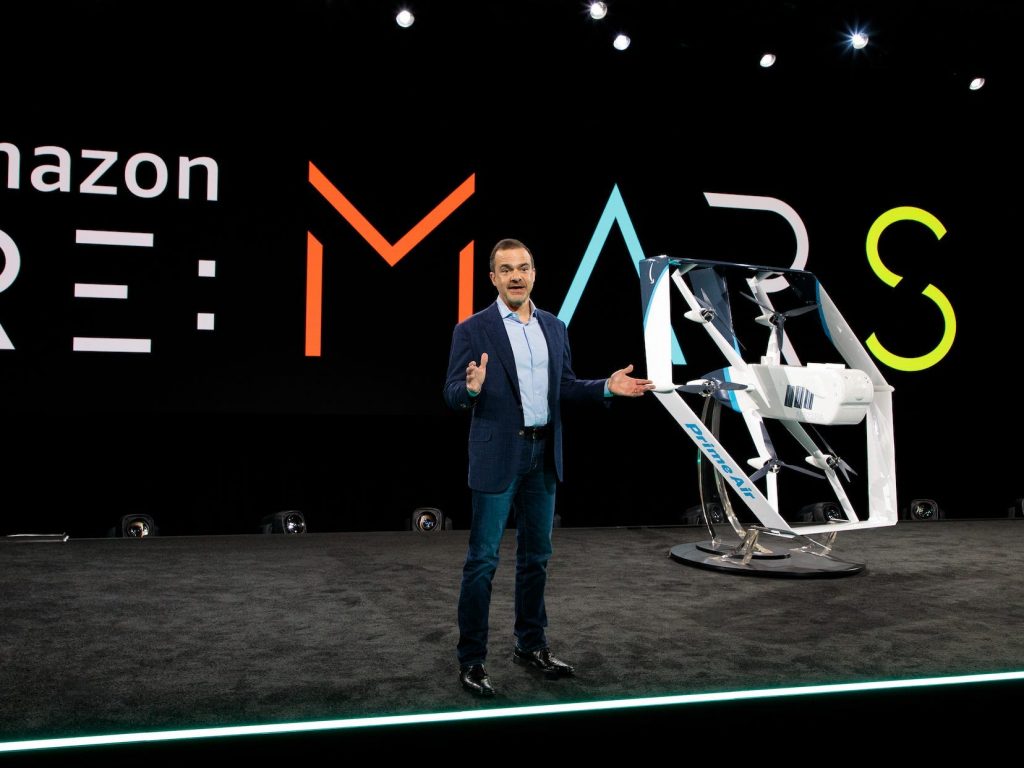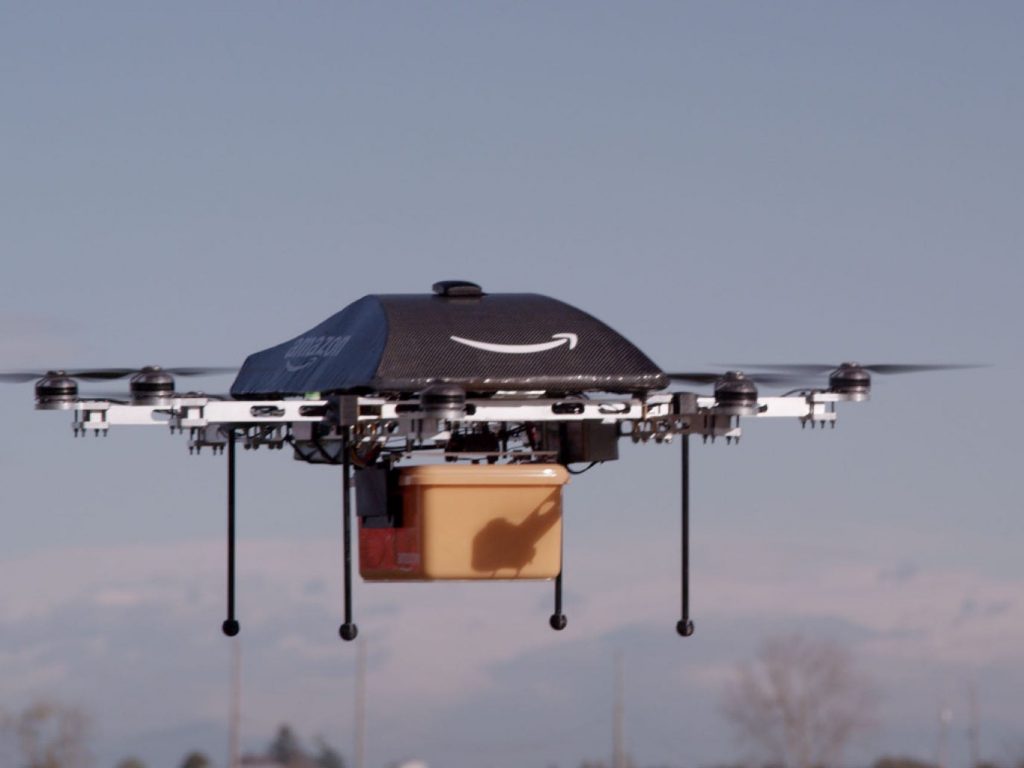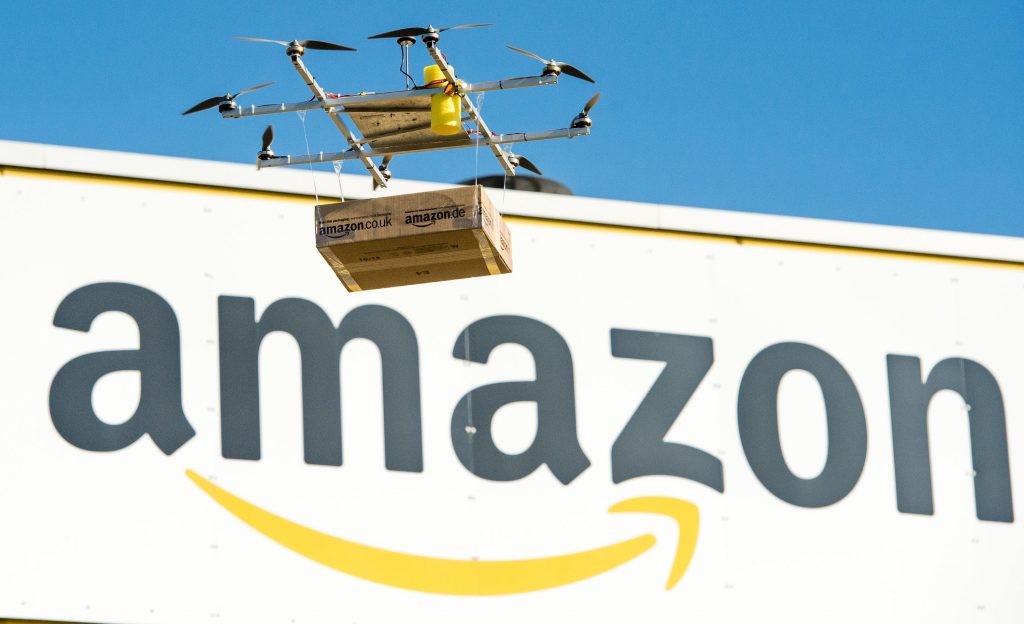- Amazon has tried to avoid federal investigations of some of its drone crashes, according to federal documents obtained by Insider.
- At least eight Amazon drones have crashed during testing in the past year, Insider previously reported.
- Amazon has been expanding its drone delivery tests and hopes to make an early version available to customers by mid-2024.
Amazon's Prime Air autonomous drone delivery program has tried to put off federal investigations into some of its drone crashes by claiming that the company has the authority to investigate its own crashes, according to federal documents obtained through a public records request. The company has also been slow to turn over data related to crashes, the documents show.
On at least two occasions, inspectors for the Federal Aviation Administration, which regulates drone flights, were surprised to learn that Amazon had moved crash evidence, which an inspector said inhibited at least one of the investigations, according to the documents. During another investigation, Amazon told the FAA that the agency's involvement was unnecessary.
At least eight Amazon drones crashed during testing in the past year, Insider previously reported, including one that sparked a 20-acre brush fire in eastern Oregon last June after the drone's motors failed.
Taken together, the documents suggest that Amazon has at times begrudged federal inspections of its experimental drone crashes. These findings come as the company seeks FAA approval to fly its drones in residential areas ahead of a potential mid-2024 customer debut.
Regulatory delays could "totally disrupt" that timeline, the company told FAA officials in a Zoom call with the agency earlier this year, according to the FAA's notes on that call.
An Amazon spokesperson said that Insider's characterization of the FAA documents was "misleading and inaccurate."
Prime Air "has complied with all incident reporting, investigation, and other applicable regulatory requirements," the spokesperson, Kelly Nantel, said. "Over the last seven years, the FAA has never taken an enforcement action against Prime Air, and has awarded us an air carrier certificate to enable commercial deliveries — showing that our comprehensive process has met the FAA's high bar."

Since launching in 2013, Prime Air has been beset by delays and missed deadlines. The division has been under recent pressure to deliver results. Executives earlier this year concluded the seven years the team had spent on R&D had failed to produce "a delivery service that could be safely operated over populated areas," Insider previously reported.
Prime Air VP David Carbon, a former Boeing executive, has spent the past two years pushing the division to complete testing needed to obtain regulatory approval for its autonomous drones. But changing goals, frequent delays, and a shifting culture has led to low morale, employee burnout, and an attrition rate as high as 70% on the company's test team, Insider previously reported. Some employees have left amid concerns about Prime Air's safety culture, Bloomberg reported last month.
Amazon has taken so long to unveil its drone delivery program because its engineers are "working to solve complicated problems and are committed to extensive testing to ensure our drone delivery service is safe and reliable. Doing so involves meeting very high internal, technical, and regulatory bars," Nantel said.
An FAA inspector spars with Amazon
To adhere to its timeline of unveiling drone delivery by 2024, Amazon needs a suite of FAA approvals within the next two years. The approvals would allow the drones to fly beyond the sight-lines of Prime Air operators and observers, over cities and towns, and to take off and land in close proximity to people, according to internal company documents obtained by Insider.
Obtaining those approvals requires the FAA to sign off on the drones' safety. Amazon, however, has insisted the FAA did not need to be involved in investigating the cause of some of its drone crashes, according to public records.
Last July, Amazon told an FAA inspector who had been sent to investigate crashes at Amazon's drone test site in Pendleton, Oregon, that the agency's involvement was unnecessary because Amazon was conducting its own crash investigations, the inspector, Jim Holden, wrote in notes appended to two crash reports.
An FAA spokesperson said the agency has the ultimate authority to investigate aircraft crashes when it decides it is necessary to do so. Amazon's spokesperson did not respond to questions about jurisdiction over crash investigations.
The company also seemed reluctant to release details about crashes, Holden wrote. In one report, he noted that he was still waiting for "photos and information" about a crash a month after it occurred. Holden wrote in the same report that Amazon's representative had tried to put off the crash inspection by saying he had a dentist appointment.
In a separate report, Holden noted that he was prompted to make an in-person visit to the crash site in order to "remedy" Amazon's "slow and cautious release of details about incidents."
Amazon was "confused as to why we are looking into" drone crashes "in so much detail," Holden wrote, speculating that "Amazon legal is likely communicating their concerns of our elevated involvement directly to FAA Headquarters personnel." An FAA spokesperson declined to comment on the agency's communications with Amazon. Reached by phone, Holden declined to respond to questions.
Amazon at least twice removed drone wreckage before the FAA could investigate, according to the documents. Last July, during an inspection related to a drone that had dropped 120 feet out of the sky, Holden asked to see the remains of the drone's motor and propeller, central and sensitive parts of the machine. He reported that the "motor and propeller had been removed by the engineers and sent to Seattle for THEM TO INVESTIGATE," the all-caps a departure from the style of the rest of his reports.
Two months earlier, Amazon had also removed wreckage of a drone that had crashed due to a propeller failure. Investigation of that crash site "was not possible," the inspector noted in that instance, and reminded Amazon that crash debris "should not be disturbed or moved until after release of wreckage" by federal regulators.

An Amazon spokesperson said it is now the company's practice to notify the FAA before moving crash wreckage.
Motor and propeller failures have been the cause of many of Amazon's recent drone crashes, according to seven federal crash reports reviewed by Insider, as well as two former Prime Air employees.
In the fiery crash last June, Amazon's 89-pound drone plummeted 160 feet to the ground "in uncontrolled free fall," according to an FAA crash report. An "intense lithium battery fire quickly consumed the aircraft," and the fire spread to the field where the drone had crash-landed, the report added. The municipal fire department contained the blaze, according to a fire report from the incident.
Companies and regulators expect some experimental aircraft to crash during testing, where the machines are pushed to their limits. "With rigorous testing like this, we expect incidents like these to occur, and we apply the learnings from each flight towards improving safety overall," Nantel said. Amazon tests its drones "over a controlled, unpopulated area," Nantel said, and "no people or property were harmed in the process."
Internally, Prime Air recognizes that in order for autonomous drone delivery to catch on, customers must perceive it to be safe. "Safety is paramount" is the first of Prime Air's seven organizational tenets.
Prime Air's first major public-facing test of its capabilities comes this fall, when the company expects to begin dropping Amazon packages to 1,300 test customers in Texas and California. Prime Air has previously only delivered packages to a handful of customers in a small-scale pilot program, largely in Oregon.
Do you work at Amazon? Got a tip? Contact reporter Katherine Long on the encrypted messaging app Signal (+1-206-275-9280) or email ([email protected]). Reach out using a non-work device.
